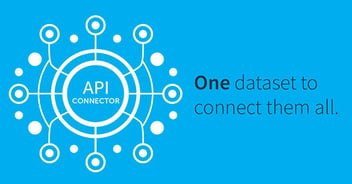In case you missed it, we're in a recession. Inflation's still red hot, supply chain issues persist, mass layoffs litter our news feeds, and many businesses are simply battening down the hatches to weather the storm.
Like past recessions, many businesses will reduce costs by cutting their marketing and advertising budgets. We're already seeing this behavior across industries and even among some of our clients.
But we’d like to challenge this approach to recessions and the thinking that often leads to these conclusions. So, let's play this out for a moment.
The importance of measurement in marketing
On paper, this strategy makes sense. Ad spend is often one of the larger line items in the marketing budget, and it's easy to realize significant savings immediately with relatively little effort.
On top of that, you might assume your customers (like you) aren’t interested in spending money during a recession. But is this actually true? Does your data support these assumptions? Do you have this type of visibility into your customers' behaviors?
You're playing a dangerous game by reducing or stopping your ad spend if you don't know the answers to these questions. The reality is business doesn’t stop during a recession, and your customers don't stop thinking about their futures. Sure, buying habits may change for a time, but you should continue advertising to potential customers and interacting with current customers. If you don't, you risk increasing your long-term opportunity costs and losing valuable market share. And you might be surprised – a recession can be a great time to increase ad spend.
How can savvy marketers use a recession to their advantage?
We’re not suggesting you act as if everything is fine, and the economy isn't tough right now. We're not even saying you shouldn't hone your ad budgets. Instead, we’re suggesting you use data to understand your customers better, evaluate your current ad spend, and recalibrate to maximize your effectiveness during a recession.
Without good data feeding and optimizing your campaigns, you’re ultimately losing ad dollars due to campaign inefficiencies, insufficient ad personalization, and imbalanced campaign allocations. You need to know who people are to deliver relevant, hyper-personalized ads, offers, and content that converts. And you need accurate data to know what is, and isn’t, working.
Here are four ways to recession-proof your ad spend using a first-party customer data solution:
1. Make decisions based on accurate information.
Your ad campaigns are only as good as the data you use to create and feed them. The path to gathering and acting upon good data is often through investments in your MarTech stack, specifically a first-party customer data solution.
There's a massive difference between the type of data you get from a first-party solution and third-party cookie-based solutions. Most third-party solutions rely on extremely vague parameters to track the effectiveness of ads.
For example, many cookie-based solutions use page load time to indicate whether a visitor’s seen your ad. This parameter alone is too simplistic to truly understand what’s going on with your advertising, and it doesn’t account for a user experiencing technical issues or other factors. What if the user's internet connection is slow or they’re using a hotspot on their budget cell plan? What if the visitor clicked your page while their kids were streaming three 4K movies and hosting a Fortnite LAN party for the entire neighborhood? You get the point. The ad may have never even displayed.
Having accurate, real-time insight into ad visibility is key to precise ad metrics including views, CTR, and conversion. Once you have the right data, you’ll be able to identify exactly what's working, for which individuals, and on which channels. Then you can hyper-personalize your campaigns and adjust spend, channel, etc. to maximize ROI on every ad dollar.
Good data allows for sound decision-making, so take the opportunity to gather accurate and actionable data to inform your advertising decisions during a recession.
2. Do more with less by personalizing ad campaigns.
What if you could identify visitors with a higher probability of converting before bidding on ad space and target segments? And what if you could use this information to create a more tailored ad experience for each individual? This is precisely the type of visibility and control a first-party CDP gives you, and it can lead to big savings on ad spend.
First-party data solutions, and the extensive data-crunching power they bring to the table, create a detailed picture of who your visitors are by persisting their identity across various channels, devices, and domains. The result? True relevancy in-the-moment.
First-party data capture solutions go beyond one-dimensional data points to analyze visitor behavior and determine interest and intent. A modern data capture solution also uses AI and machine learning to stitch together various data points, both technical and behavioral, to create a true-to-life, actionable picture of who your visitors are. By understanding each individual, and their behaviors, you can adjust your messaging, campaigns, and ad spend based on real-time insight from where potential customers are in their journey.
First-party data tells you who’s browsing your website, clicking your ads, and interacting with your digital channels. You can then use this knowledge to present personalized and relevant advertisements and offers to identified, interested parties that indicate intent.
With this complete customer view, you can also feed the information into your key performance metrics and analytics for a more granular view of your campaign and ad performance at an individual level. Understanding what’s working and what’s not, and with who, means you can pinpoint exactly where to optimize your ad content and spending. Maybe it’s a channel that performs better with a certain persona, or a specific ad that delivers more conversions at a certain point in the customer journey. The data will tell the story.
Better personalization leads to higher quality conversions, which of course leads to more sales. But it also directly impacts ad cost because in many ad platforms the better your ads perform, the lower your CPC. It’s a win-win.
This highly effective, data-driven ad strategy empowers you to maximize your advertising ROI, even during a recession. We've worked with dozens of clients in various industries to evolve their traditional reactive ad strategy using third-party platforms, into a real-time dynamic ad strategy using our innovative first-party customer data engine. As a result, our clients see average savings of 40% on ad spend while increasing their ROAS! Who doesn’t want to maximize their ad budget during a recession?
3. React to market changes in real-time.
An enterprise data capture solution enables even greater savings with the ability to deliver real-time feedback on your ad performance. "Set it and forget it" has been the mantra for advertising campaigns for too long, and many businesses don't know the results of their efforts until days or weeks later when they receive a static report. They’re forever looking back, and unable to make changes in real-time.
The problem with this approach is it leaves you out of touch. The market moves fast, and if you can’t react in-the-moment, your customers will move on to competitors who respond to their needs faster. That's why you need to stay ahead of the curve. By leveraging first-party data to get real-time feedback on user behaviors, interactions, and campaign effectiveness – including accurate visibility metrics – you can see, and action, results immediately. You can literally adapt your ads and campaigns on the fly to meet changing conditions, enabling you to further optimize your ad budget to maximize opportunities in real-time.
4. Increase your ad spend to see exponential gains in market share.
Everything we’ve discussed so far will effectively recession-proof your ad budget in terms of optimizing ROI and reducing costs. But one of the most intriguing and counterintuitive insights that marketers can uncover during a recession is this may actually be the time to increase ad spending.
You didn't see that coming, did you? Think about it. If all your competitors are cutting their marketing and advertising budgets, they're effectively vacating the brand battlefield and leaving the market open and exposed for you to seize. Not to mention, when competition drops for ad space and terms, overall ad costs drop as well!
While this provides direct savings on your overall ad spend, you can dramatically increase revenue by actively increasing your ad spend. With an optimized ad campaign strategy, you can show a predictable revenue increase for every increase in ad spend. So, while your competitors shy away from advertising and take a hit during a recession, you can be increasing sales – and market share.
Looking at previous recessions, there are many examples of market leaders emerging by continuing to spend on advertising throughout the downturn.
Toyota could have slashed costs during the oil crisis of the 1970s, but instead they focused on long-term marketing strategies that delivered on-brand, relevant, and culturally aware messaging - ultimately helping them overtake Volkswagen to become the leading imported vehicle manufacturer a year after the recession ended.
In the 1990s, Pizza Hut and Taco Bell took advantage of McDonald’s decision to drop its advertising and promotion budget. While McDonald's sales fell by 28%, Pizza Hut's sales climbed by 61% and Taco Bell's sales increased by 40% thanks to the continued promotion of their new offers and discount menu.
And when the economy tanked in 2008, Del Monte's Chief Marketing Officer ditched conventional wisdom by increasing advertising spend with their memorable “fruit undressed” campaign, turning a $10.1 million loss into a $58.6 million profit.
When you’re being more efficient with your budget and delivering better ROI with accurate metrics, it’s pretty easy to make a strong case for more ad dollars. Talk about an opportunity!
What will 2023 look like for your business?
Very few win-win-wins exist in the world today, but this is one that’ll allow a few brave and savvy marketers to kick their advertising into the next dimension. Using first-party, live-time data brings so many benefits to the table it’s almost unbeatable in times like these. So, which path is your business going to choose during these hard economic times?







